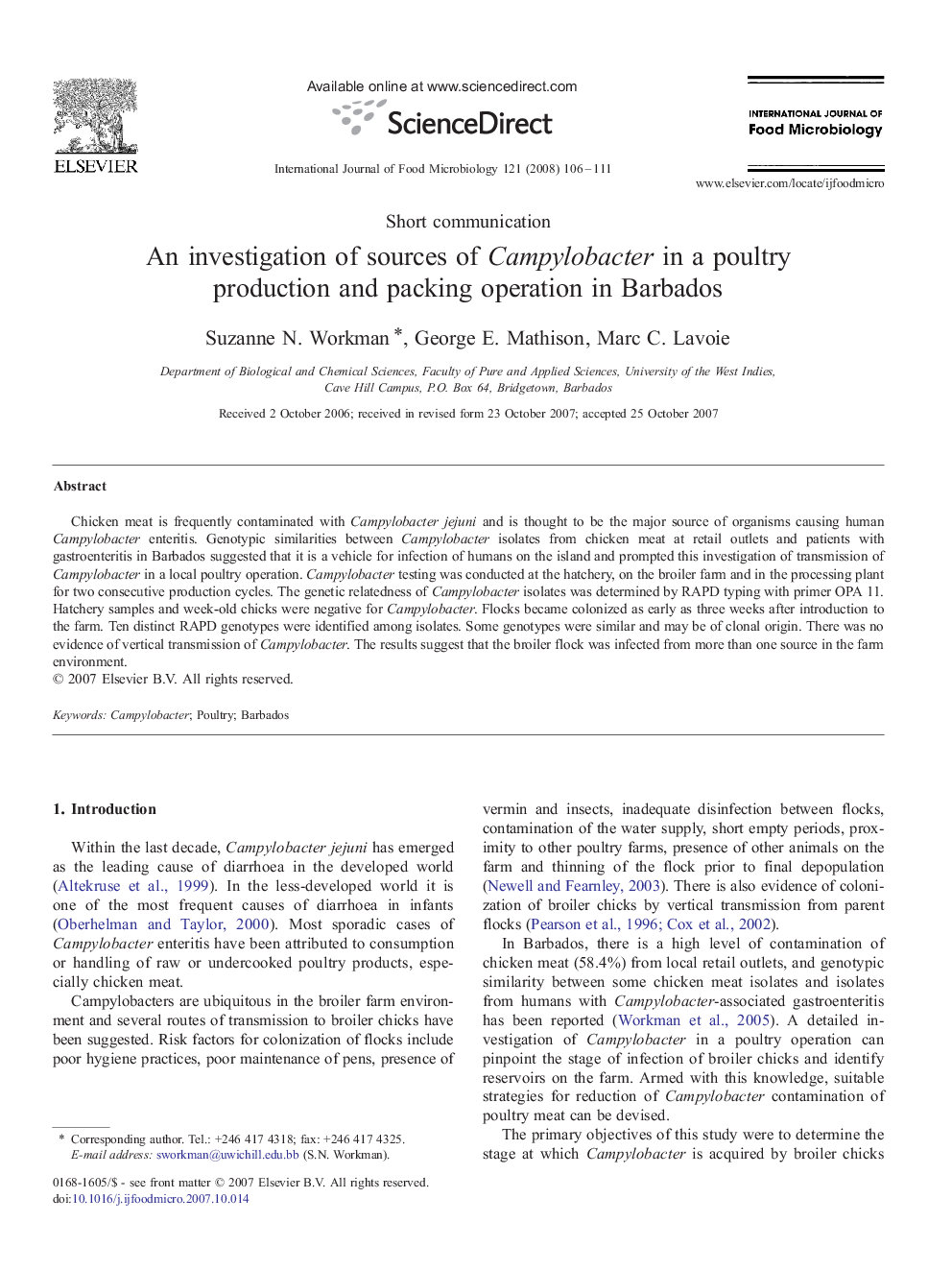| Article ID | Journal | Published Year | Pages | File Type |
|---|---|---|---|---|
| 4369376 | International Journal of Food Microbiology | 2008 | 6 Pages |
Abstract
Chicken meat is frequently contaminated with Campylobacter jejuni and is thought to be the major source of organisms causing human Campylobacter enteritis. Genotypic similarities between Campylobacter isolates from chicken meat at retail outlets and patients with gastroenteritis in Barbados suggested that it is a vehicle for infection of humans on the island and prompted this investigation of transmission of Campylobacter in a local poultry operation. Campylobacter testing was conducted at the hatchery, on the broiler farm and in the processing plant for two consecutive production cycles. The genetic relatedness of Campylobacter isolates was determined by RAPD typing with primer OPA 11. Hatchery samples and week-old chicks were negative for Campylobacter. Flocks became colonized as early as three weeks after introduction to the farm. Ten distinct RAPD genotypes were identified among isolates. Some genotypes were similar and may be of clonal origin. There was no evidence of vertical transmission of Campylobacter. The results suggest that the broiler flock was infected from more than one source in the farm environment.
Keywords
Related Topics
Life Sciences
Agricultural and Biological Sciences
Food Science
Authors
Suzanne N. Workman, George E. Mathison, Marc C. Lavoie,
